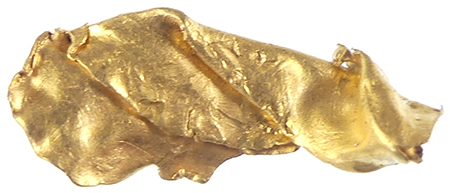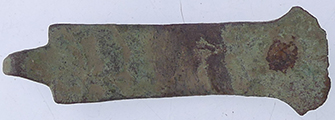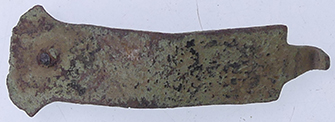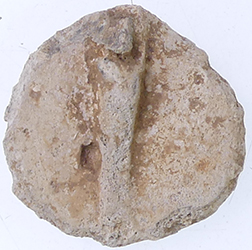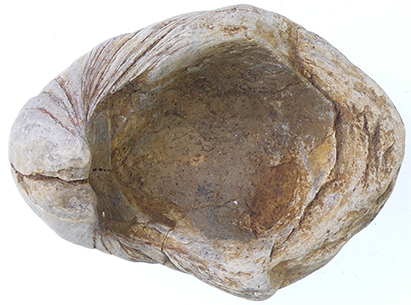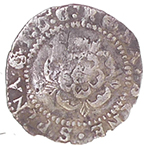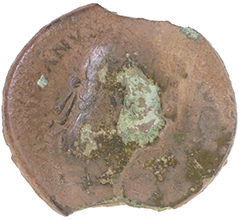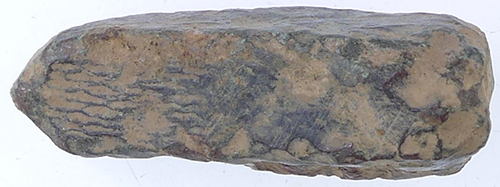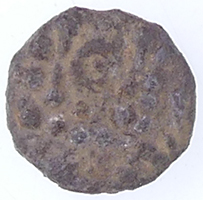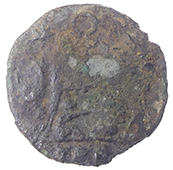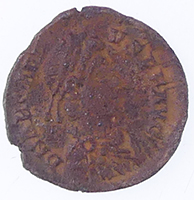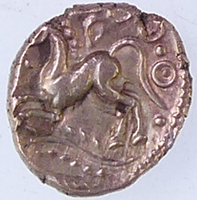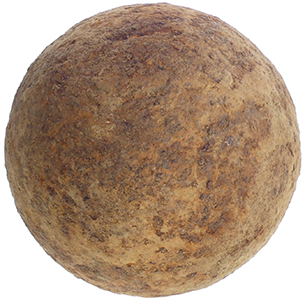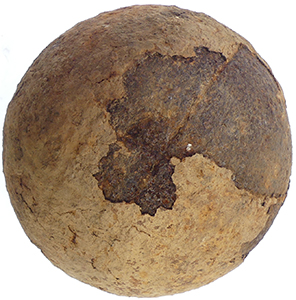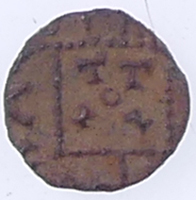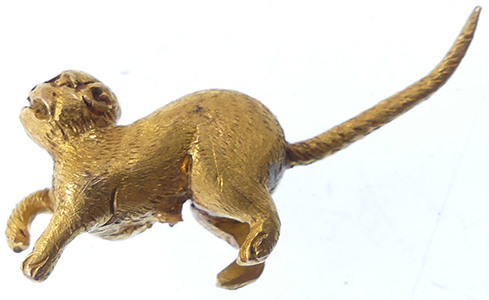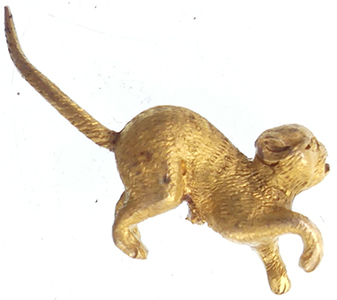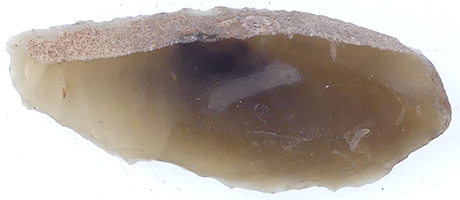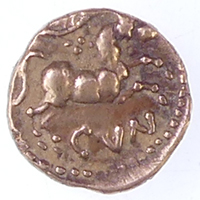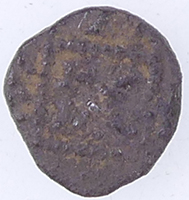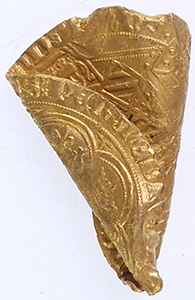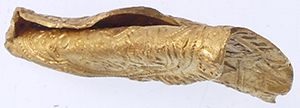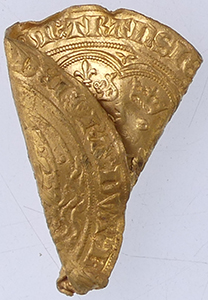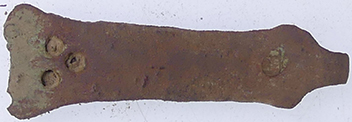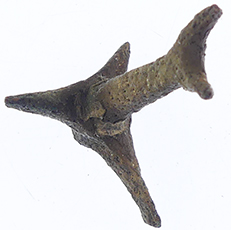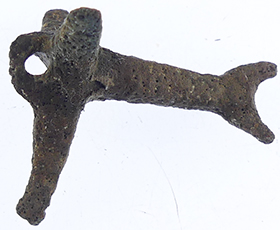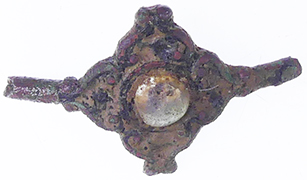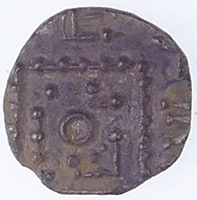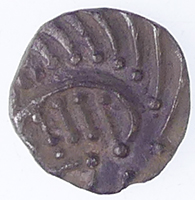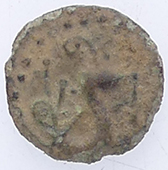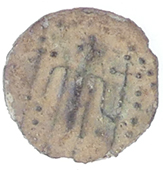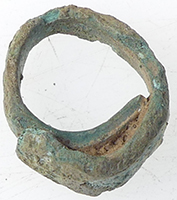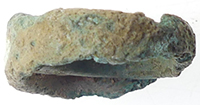

Metal detecting holidays in England with the World's most successful metal detecting club.20 years plus.
Twinned with Midwest Historical Research Society USA.
2024 Sept finds page
Season kicks off 4th Sept 2024 Page updated 26th Sept |
45- 40 BC Reported to museum 1.152g, 11.32mm
Catuvellauni tribe |
|||||||||||||||||||||||||||
Very rare Heybridge Horse type Celtic gold qtr stater - Trinovantes tribe c50-BC Wreath between two pellet lines,stylised locks of hair above, crescents and pellet ring motifs below Horse r,large rump,various pellets around, pellet boss below ABC 2359 Extemely rare 1.25g, 12.88mm Reported to museum
The Trinovantes or Trinobantes were one of the Celtic tribes of pre-Roman Britain. Their territory was on the north side of the Thames estuary in current Essex and Suffolk, and included lands now located in Greater London. They were bordered to the north by the Iceni, and to the west by the Catuvellauni. Their name derives from the Celtic intensive prefix "tri-" and "novio" - new, so meaning "very new" in the sense of "newcomers", but possibly with an applied sense of vigorous or lively - so the name could mean "the very vigorous people". Their capital was Camulodunum (modern Colchester), one proposed site of the legendary Camelot. Shortly before Julius Caesar's invasion of Britain in 55 and 54 BC, the Trinovantes were considered the most powerful tribe in Britain. At this time their capital was probably at Braughing (in modern-day Hertfordshire). In some manuscripts of Caesar's Gallic War their king is referred to as Imanuentius, although in other manuscripts no name is given. Some time before Caesar's second expedition this king was overthrown by Cassivellaunus, who is usually assumed to have belonged to the Catuvellauni. His son, Mandubracius, fled to the protection of Caesar in Gaul. During his second expedition Caesar defeated Cassivellaunus and restored Mandubracius to the kingship, and Cassivellaunus undertook not to molest him again. Tribute was also agreed. The next identifiable king of the Trinovantes, known from numismatic evidence, was Addedomarus, who took power c. 20-15 BC, and moved the tribe's capital to Camulodunum. For a brief period c. 10 BC Tasciovanus of the Catuvellauni issued coins from Camulodunum, suggesting that he conquered the Trinovantes, but he was soon forced to withdraw, perhaps as a result of pressure from the Romans, as his later coins no longer bear the mark "Rex", and Addedomarus was restored. Addedomarus was briefly succeeded by his son Dubnovellaunus c. 10–5 BC, but a few years later the tribe was finally conquered by either Tasciovanus or his son Cunobelinus. Mandubracius, Addedomarus and Dubnovellaunus all appear in later, post-Roman and medieval British Celtic genealogies and legends as Manawydan, Aedd Mawr (Addedo the Great) and Dyfnwal Moelmut (Dubnovellaunus the Bald and Silent). The Welsh Triads recall Aedd Mawr as one of the founders of Britain. The Trinovantes reappeared in history when they participated in Boudica's revolt against the Roman Empire in 60 AD. Their name was given to one of the civitates of Roman Britain, whose chief town was Caesaromagus (modern Chelmsford, Essex). The style of their rich burials (see facies of Aylesford) is of continental origin and evidence of their affiliation to the Belgic people. Their name was re-used as Trinovantum, the supposed original name of London, by Geoffrey of Monmouth in his fictitious Historia Regum Britanniae, in which he claimed the name derived from Troi-novantum or "New Troy", connecting this with the legend that Britain was founded by Brutus and other refugees from the Trojan War.
|
|||||||||||||||||||||||||||
c 8thC Saxon bronze zoomorphic brooch 11.7g, 46.6mm L x 12.2mm W |
|||||||||||||||||||||||||||
17thC Charles 1st silver button - very unsual type - reported as treasure to museum |
|||||||||||||||||||||||||||
5 BC to 25BC Addedomarus - Trinovantian tribe 5.44g,16.96mm Reported as hoard addendum coin to museum |
|||||||||||||||||||||||||||
1762 George III milled gold qtr guinea - love token 2.07g, 15.63mm
|
|||||||||||||||||||||||||||
13th C seal matrix - bird facing left |
|||||||||||||||||||||||||||
1560-1 Elizabeth 1st hammered silver shilling - Martlet mint mark |
|||||||||||||||||||||||||||
Romano British riveted bronze head mount 36mm L x 24.9mm W x 3.83mm T |
|||||||||||||||||||||||||||
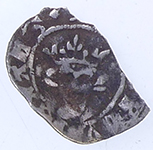 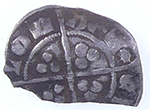 |
  |
||||||||||||||||||||||||||
1300-1310 Edward III hammered silver halfpenny - new obverse legend Obv **RDVS REX ANG' Rev Obv CI**/LON/DON - London mint |
1596 Elizabeth 1st hammered silver sixpence | ||||||||||||||||||||||||||
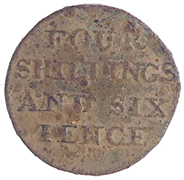 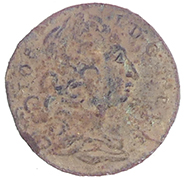 |
 |
 |
|||||||||||||||||||||||||
Four shillings and six pence copper coin - unknown researching it - turns out to be a coin weight Ohio Seth ID'd it. England. 4s 6d (Portuguese half escudo) W 156916.9mm 1.70gm. ·IOS· I· D· G· P· REX· His laureate draped bust right. R. FOUR SHILLINGS AND SIX PENCE. W1569. Rare.
|
Medieval shell mount | 1500-1700 mount | |||||||||||||||||||||||||
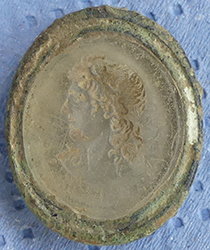 |
 |
||||||||||||||||||||||||||
| Georgian intaglio - bust facing left | 15thC lead token | ||||||||||||||||||||||||||
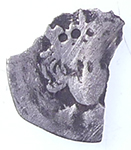 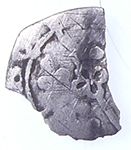 |
  |
||||||||||||||||||||||||||
| Medieval hammered silver penny - quadrefoil with pellet at centre of reverse cross - York mint | 1413-22 Henry V hammered silver half penny - Type 11 -trefoil to left and annulet to right of bust - satire stops Obv + hENRICxREXx ANGL' Rev CIVI/TAS/LON/DON - Londone mint
|
||||||||||||||||||||||||||
  |
|
||||||||||||||||||||||||||
1780 - 2 Skilling - Christian VIIObverseCrowned monogram Script: Latin Lettering: D.G.DAN.NOR.VAN.GOT.REX ReverseCrowned shield with 3 lions and 9 hearts Script: Latin Lettering: |
Mizpah is a Hebrew word that means 'watchtower' and is loosely interpreted as 'May God watch over you'. During the Victorian era, the practice of engraving rings and other types of jewelry with the word “MIZPAH” grew in popularity. The word is Hebrew and means “watchtower”. | ||||||||||||||||||||||||||
 |
  |
||||||||||||||||||||||||||
| 18th Lead sewing palm guard | 1247 Henry III hammered silver voided long cross half penny Rev ANT -NIC Moneyer Nicole of Canterbury mint |
||||||||||||||||||||||||||
49BC Roman silver coin
|
|||||||||||||||||||||||||||
  |
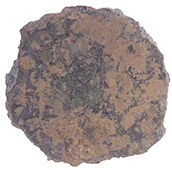  |
||||||||||||||||||||||||||
| 1247 Henry III hammered silver voided long cross half penny | Mid 4thC House of Constantine Roman bronze coin | ||||||||||||||||||||||||||
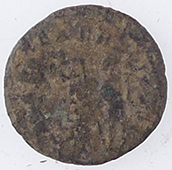  |
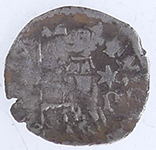  |
||||||||||||||||||||||||||
| Mid 4thC House of Constantine Roman bronze coin - two soldiers standing | Italian States-Venice, Antonio Venier as Doge (1382-1400), Soldino, Venice Mint + ANTON VE_NERIO DVX Doge standing left, holding banner, * / P in right field + . S . MARCVS . VENETI . Winged lion of St. Mark facing left, holding book with both front paws all in inner circle Plain Edge |
||||||||||||||||||||||||||
 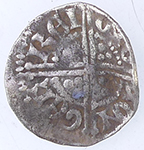 |
  |
||||||||||||||||||||||||||
1247 Henry III hammered silver voided long cross penny Obv hENRICVS REX III Ref GEF/REI/ONO/XON - Moneyer Gefrie of Oxford mint |
1634 Charles 1st hammered silver penny | ||||||||||||||||||||||||||
 |
 |
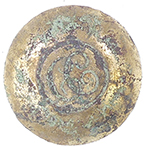 |
|||||||||||||||||||||||||
| Georgian trade weight | 1500-1700 mount | 1500-1700 mount | 66th or 99th Regiment of foot button ? | ||||||||||||||||||||||||
25BC Dubnovellaunus Celtic gold qtr stater 1.307g, 10.32mm Dubnovellaunos 25 BC to 5 AD
A king called Dubnovellaunus succeeded his father Addedomarus as king of the Trinovantes ca. 10-5 BC and ruled for several years before being supplanted by Cunobelinus of the Catuvellauni. |
|||||||||||||||||||||||||||
 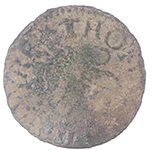 |
 |
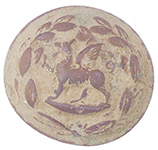 |
|||||||||||||||||||||||||
| 17thC Thomas Peeke of Colchester Essex hammered copper trade farthing | 19thC livery button | 19thC livery button | |||||||||||||||||||||||||
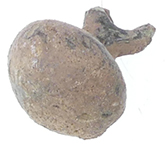 |
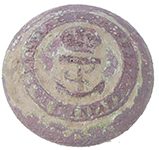 |
 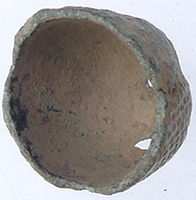 |
|||||||||||||||||||||||||
| 16thC Tudor buttons | 1901 Royal Marines Light infantry button - Victoria crown | Medieval bronze thimble | |||||||||||||||||||||||||
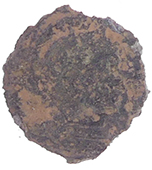  |
  |
||||||||||||||||||||||||||
| Mid 4thC House of Constantine Roman bronze coin | Mid 3rdC Barbarous radiate Roman bronze coin his appears to be a "garden variety" mid-later 3rd century contemporary local copy - the sort of thing which is liable to be referred to (although I hate the term) as a so-called "barbarous radiate". It's stylistically very interesting in that the stick-figure reverse device is built up out of almost all straight lines and angles, where these generally tend to be made up of curvy or loopy, freehand-engraved lines. |
||||||||||||||||||||||||||
Ancient gold sheet - 0.65g, 17.5mm L |
|||||||||||||||||||||||||||
|
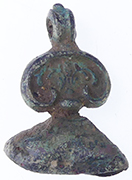 |
 |
|||||||||||||||||||||||||
| Medieval book clasp | Georgian fob seal | 1500-1700 mount | |||||||||||||||||||||||||
  |
 |
||||||||||||||||||||||||||
| 2nd C Roman fibular brooch foot - need to get my brooch books out as the foot is an unusual design | Georgian spur fitting | ||||||||||||||||||||||||||
C 1250 AD Non Heraldic personal seal of freeholders. 4 have been found attached to pasture rights.
Medieval (13th century) lead alloy seal matrix. It is circular in plan, with a small triangular suspension loop on the reverse. The central design is a flower with six petals. The legend is slightly illegible but Reads GVWIRONVS - Guwironus
|
|||||||||||||||||||||||||||
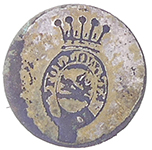 |
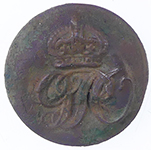 |
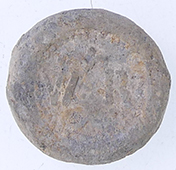 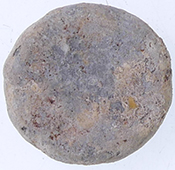 |
|||||||||||||||||||||||||
| 19thC livery button - 'FOLLOW ME' | Victorian General Post Office button button | 17thC William III lead trade weight Obv Fleur over WR |
|||||||||||||||||||||||||
 |
 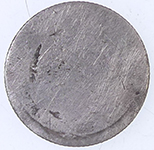 |
||||||||||||||||||||||||||
| Medieval bar mount | 1818 George III milled silver sixpence | ||||||||||||||||||||||||||
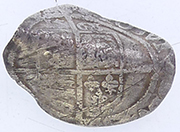  |
 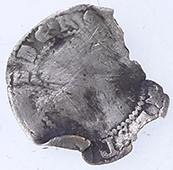 |
||||||||||||||||||||||||||
| 1563 Elizabeth 1st hammered silver sixpence | 16thC Elizabeth 1st hammered silver half groat | ||||||||||||||||||||||||||
 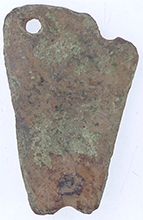 |
 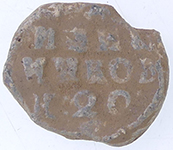 |
||||||||||||||||||||||||||
| Medieval riveted mount | 1818 Russian lead bale seal | ||||||||||||||||||||||||||
Devils Toenail's 'Gryphaea'Also known as ‘devil’s toenails’, they are an extinct species of oyster commonly found in England. It is said in folklore they were created when the devil clipped his toenails, due to their curved, ridged appearance being similar to a nail. They lived in large colonies in warm shallow waters and sat on the sea-floor with their shells half buried in the mud. 5-7cm approx. Period: Jurassic
|
|||||||||||||||||||||||||||
 |
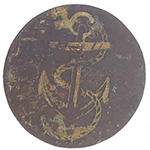 |
 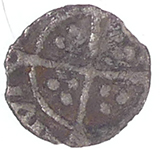 |
|||||||||||||||||||||||||
| Georgian button | Capt / Commander - 1774-1787 RN Master & Mate - 1787-1807 RN Surgeon - 1787-1805 RN Purser - 1787-1807 |
1509-26 Henry VIII hammered silver halfpenny - single arched crown -Cross fourchee 9.39mm, 0.27g |
|||||||||||||||||||||||||
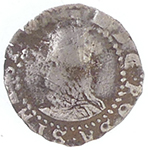 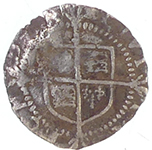 |
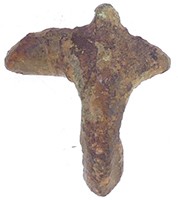 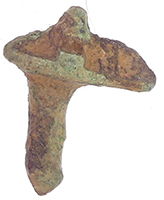 |
||||||||||||||||||||||||||
| 1582-84 Elizabeth 1st hammered silver penny - A mint mark | 2ndC Roman head type fibular brooch | ||||||||||||||||||||||||||
|
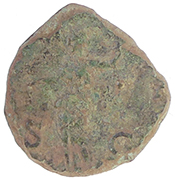  |
||||||||||||||||||||||||||
| 1605-6 James 1st hammered silver penny - rose mint mark | Mid sized Roman bronze coin sent for ID 117- 138 AD Hadrian 3.94g, 22mm This also appears to be Hadrian, this one's an as. From the photos, it's the sort of thing I'd want to moisten with water or spit in the field to try to bring up a little more visible detail/contrast. |
||||||||||||||||||||||||||
Huge 2ndC Roman bronze coin - sent for ID 117- 138 AD Hadrian 18.6g, 32.9mm This appears to be a sestertius of Hadrian with several major plow-strikes. The reverse is some one of the many allegorical personifications used on coins (and often worshiped as demi-goddesses) but not enough detail remains for me to make a realistic stab at telling you which it may have been. |
|||||||||||||||||||||||||||
  |
 |
 |
|||||||||||||||||||||||||
| 1634 Charles 1st hammered copper farthing | Georgian button | SC union button ? | |||||||||||||||||||||||||
  |
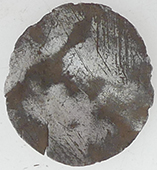  |
||||||||||||||||||||||||||
| 17thC hammered copper trade farthing | 1575 Elizabeth 1st hammered silver half groat | ||||||||||||||||||||||||||
Gold bead found in 2022 and reported as treasure is ID'd as Saxon and aquired by museum - great find BEADUnique ID: ESS-E72093 Object type certainty: Certain A complete gold bead of probable early medieval date (c. 600-700). Description: The bead is lentoid and has a circular aperture running through its centre, length-wise. There are some small cracks to the surface. Measurements: length: 9.64mm; diameter: 7mm; weight: 1.09g Discussion: Biconincal beads are known from high status Anglo-Saxon burial contexts and acted as 'spacer' beads in necklaces. These are constructed from coiled wire however, with one example recorded on the database being constructed in this way and then polished mostly smooth (WMID-033CC3). This was dated to the 7th century and thus submitted for the consideration as Treasure on the basis that the material, form and method of manufacture was similar to the coiled wire examples. There is no apparent evidence that the head recorded here was made in the same way, but the form does suggest a similar date. BERK-5FD5D1 also recorded on the database and submitted for the consideration as Treasure has also been dated to the 7th century on this basis. Conclusion: It is therefore likely that this object was at least 300 years old at the time of discovery and as the object is made of more than 10% precious metals, it constitutes potential Treasure under the stipulations of The Treasure Act 1996.
|
|||||||||||||||||||||||||||
Interesting inlaid bronze widget - not sure what it is yet |
|||||||||||||||||||||||||||
c600 AD Saxon silver sceat - sent to EMC database for recording 1.27g, 11.25 nn Thanks for this first find of the season, which I have recorded as EMC 2024.0301. The details of the coin are not entirely clear but this seems to be Series E, variety G4, a Continental variety with 26 coins on EMC. Best wishes, Martin |
|||||||||||||||||||||||||||
 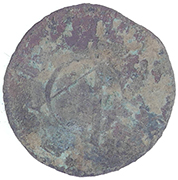 |
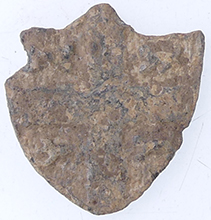 |
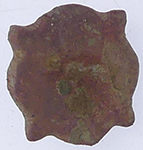 |
|||||||||||||||||||||||||
| 1806 Sweden Gustaf Adolf IV 1/4 skilling copper coin | Post medieval Heraldic harness pendant | ||||||||||||||||||||||||||
 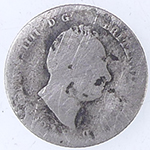 |
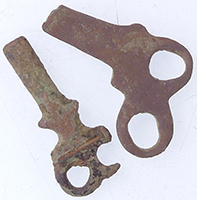 |
||||||||||||||||||||||||||
| 1837 William IV milled silver four pence | Medieval spur fragments | ||||||||||||||||||||||||||
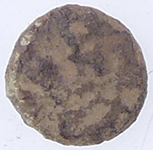  |
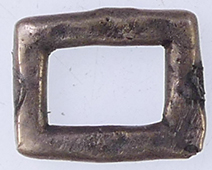 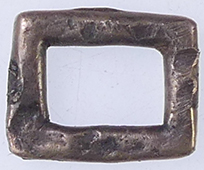 |
||||||||||||||||||||||||||
| Tiny Roman bronze coin - minim | Victorian rose gold buckle | ||||||||||||||||||||||||||
 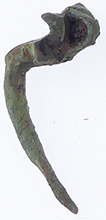  |
 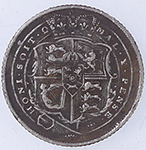 |
||||||||||||||||||||||||||
| 2ndC Roman fibular brooch | 1817 George III milled silver sixpence | ||||||||||||||||||||||||||
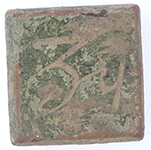  |
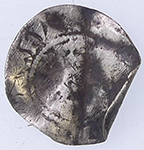 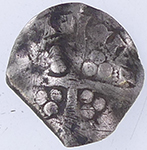 |
||||||||||||||||||||||||||
| 18thC apothecary weight | 1272 Edward 1st hammered silver long cross penny | ||||||||||||||||||||||||||
  |
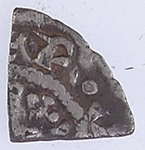 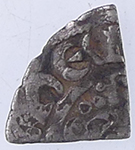 |
||||||||||||||||||||||||||
| Georgian crucifix | 1247 Henry III hammered silver voided long cross farthing Obv hEN*** Rev \EF.O *** |
||||||||||||||||||||||||||
 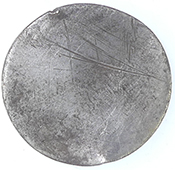 |
  |
||||||||||||||||||||||||||
| 17thC William III milled silver shilling | 1798 Russian lead bale seal | ||||||||||||||||||||||||||
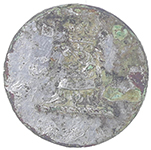 |
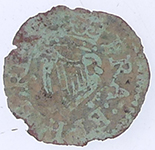  |
||||||||||||||||||||||||||
| 19thC livery button | Charles 1st Royal farthing - Harp Type 3 Maltravers 'rounds' 1634- 36, woolpack mint mark obv CAROLUS D G MAG BRIT Rev FRAN ET HIB REX
|
||||||||||||||||||||||||||
|
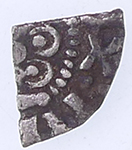 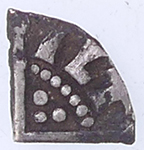 |
||||||||||||||||||||||||||
Shewolf & Twins reverse which is typically found on the VRBS ROMA, City of Rome commemorative, reduced-module folles introduced around 330 AD., at the time Constantinople became the official seat of Constantine's government. These have a helmeted and mantled bust of the allegorical personification of the City of Rome facing left on their obverses. At approximately 17mm (although at 1.41gm, it's on the light side) it's most likely from the emissions of c 330-333/5, rather than the later ones of 333/5-337 which tended to be even smaller. At some mints, they were even continued as a type past the death of Constantine in 337, although often paired with a "Vota" or a GLORIA EXERCITVS soldiers & standard reverse rather than the wolf & twins. This atypical use of a subject other than an Imperial bust on the obverse was a convenient political "dodge" for cities which hadn't necessarily declared-for or been brought securely into the fold of one or another of Constantine's sons, who had some "disagreement" about who had inherited what territory or was to rule where, etc.
|
1247 Henry III hammered silver voided long cross farthing Obv VIII*** Rev /ILT/ - Moneyer Wilton of Canterbury mint |
||||||||||||||||||||||||||
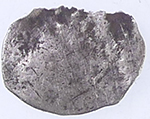  |
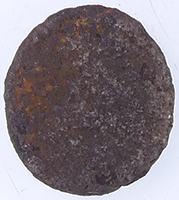 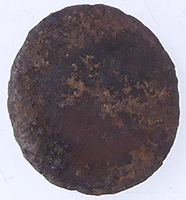 |
||||||||||||||||||||||||||
| 1300-10 Edward II hammered silver farthing- new issue with inner circles both sides - oval flan - Type 28f | BC Roman republican silver coin - needs 'cooking' to remove horn crust | ||||||||||||||||||||||||||
5thC Roman silver coin sent for ID Here's your first AR - a siliqua, I presume (about the size of an old AR or CU-NI threepence, isn't it?) Mark Lehman |
|||||||||||||||||||||||||||
25BC Dubnovellaunus Celtic gold qtr stater - reported to museum 1.37g, 12.52 mm Dubnovellaunos 25 BC to 5 AD
A king called Dubnovellaunus succeeded his father Addedomarus as king of the Trinovantes ca. 10-5 BC and ruled for several years before being supplanted by Cunobelinus of the Catuvellauni. |
|||||||||||||||||||||||||||
 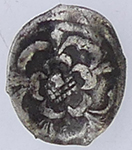 |
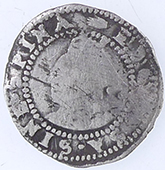 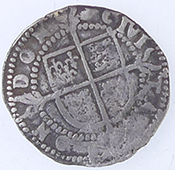 |
||||||||||||||||||||||||||
Probably one of the smallest hammered silver coins you can find, 1/3rd the weight of a Medieval silver farthing 1625-42 Charles 1st hammered silver half penny - Rose each side - no legend type |
1590-2 Elizabeth 1st hammered silver half groat - hand mint mark | ||||||||||||||||||||||||||
1640's Civil War cannon ball - 73.42mm (2.8inches) 1.6 Lbs, 25.6 oz |
|||||||||||||||||||||||||||
  |
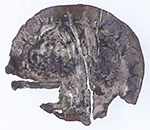 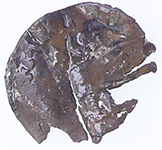 |
||||||||||||||||||||||||||
1247 Henry III hammered silver voided long cross halfpenny Obv **REX III Rev LEM/ONC - Moneyer Willem of Canterbury mint |
15thC Venetian soldino hammered silver coin | ||||||||||||||||||||||||||
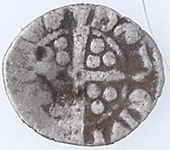  |
 |
||||||||||||||||||||||||||
| 1300-10 Edward II hammered silver farthing- new issue with inner circles both sides - oval flan - Type 28f | Georgian buckle | ||||||||||||||||||||||||||
c600 AD Saxon silver sceat - sent to EMC database for recording 1.24g, 12.02 mm I have recorded the new find, which is Series A2, as EMC 2024.0312.
Many thanks,
Martin
|
|||||||||||||||||||||||||||
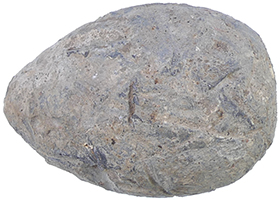 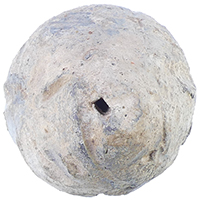 |
|||||||||||||||||||||||||||
Roman lead sling shot 44.3mm dia , 61.9mm L, 644g |
|||||||||||||||||||||||||||
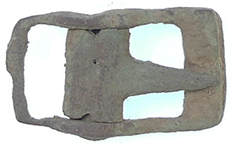 |
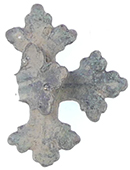 |
 |
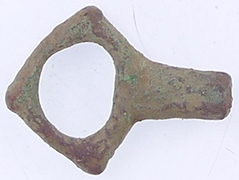 |
||||||||||||||||||||||||
| Georgian spur buckle | Medieval mount | 15thC lead token | c1Oth C Saxon harness cheek piece | ||||||||||||||||||||||||
 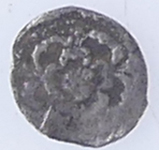 |
 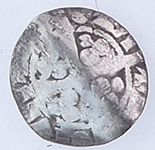 |
||||||||||||||||||||||||||
| 1625-42 Charles 1st hammered silver half penny - Rose each side - no legend type | 1279 Edward 1st hammered silver long cross penny | ||||||||||||||||||||||||||
1902 Edward VII Coronation Medal 40mm WE4560A White Metal by Spink
|
|||||||||||||||||||||||||||
Very interesting Roman coin - small bust and almost looks like a silver - sent off to Mark Lehman for his ID Although the obverse legend is unreadable - probably illiterate - and the portrait both faces left and seems to be radiate (the official ones were never radiate, only laureate or helmeted) given the small size of the bust, I'm going to guess this was probably based (perhaps several generations earlier) on a piece with Crispus' portrait. This is a contemporary copy of a "VLPP" (VICTORIAE LAETAE PRINC PERP - "[our] victorious, rejoicing, ruler for all time" ) centenionalis. ca. approximately 318-325 |
|||||||||||||||||||||||||||
 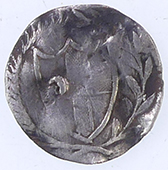 |
 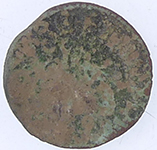 |
||||||||||||||||||||||||||
| 1649 Commonwealth hammered silver half groat | 1666 Tomas Peeke of Colchester trade farthing |
||||||||||||||||||||||||||
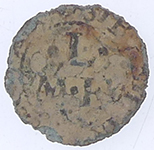 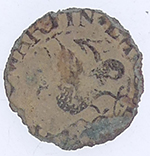 |
 |
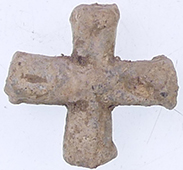 |
|||||||||||||||||||||||||
| 17thC Martin Langley of Colchester hammered copper trade farthing | Georgian cuff link | Medieval lead cross | |||||||||||||||||||||||||
  |
 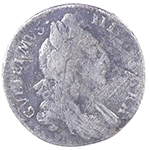 |
||||||||||||||||||||||||||
| 1816 Georgian milled silver sixpence | 1696 William III milled silver sixpence | ||||||||||||||||||||||||||
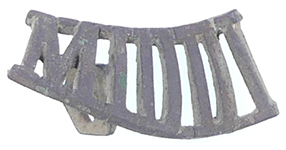 |
|||||||||||||||||||||||||||
| WWII Middlesex regiment lapel badge | |||||||||||||||||||||||||||
Medieval monkey picture
Stunning detailed high carat gold animal figurine - reported to museum as potential treasure This was on a site with 1300 BC items found, Roman and Celtic gold finds so impossible to date - I will go for medieval 3.0g, 24.4 mm L x 3.9mm W |
|||||||||||||||||||||||||||
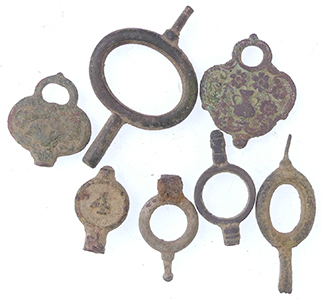 |
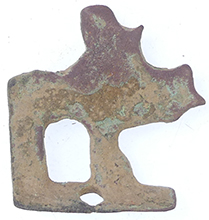 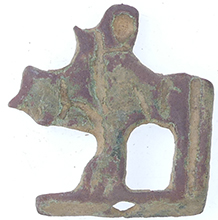 |
||||||||||||||||||||||||||
| Georgian watch winders | c10thC Saxon stirrup mount | ||||||||||||||||||||||||||
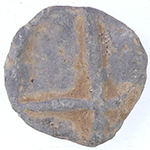  |
 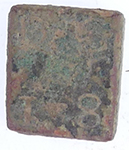 |
||||||||||||||||||||||||||
| 17thC lead token | 18thC 10 pennyweight and 8 grains coin weight | ||||||||||||||||||||||||||
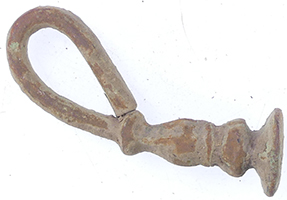 |
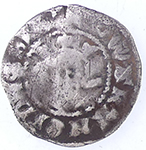 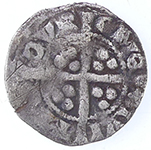 |
||||||||||||||||||||||||||
| 16thC Tudor seal spoon handle | 1279 Edward 1st hammered silver penny Obv +EDWAR ANGL DNS hYB Rev CIVI/TASDVR/EME - Durham mint |
||||||||||||||||||||||||||
 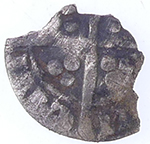 |
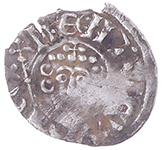 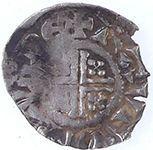 |
||||||||||||||||||||||||||
1279 Edward 1st hammered silver penny Obv +ED******YB Rev CIVI***** N - London mint |
1199- 1216 John hammered silver short cross penny Class 6b1 Obv hENRICVS REX Rev +RAVF ON LVNDE -Moneyer Rav(l)F of London mint |
||||||||||||||||||||||||||
 |
 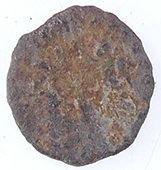 |
||||||||||||||||||||||||||
| 3 - 1634 Charles 1st hammered copper rose farthings | Mid 4thC Roman silver coin | ||||||||||||||||||||||||||
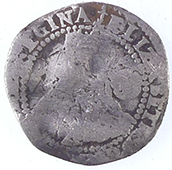 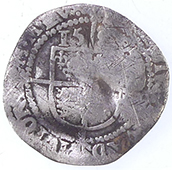 |
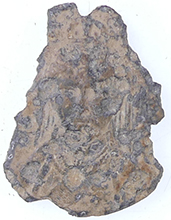 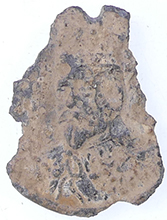 |
||||||||||||||||||||||||||
| 1582 Elizabeth 1st hammered silver half groat -Sword mint mark | Interesting double sided bust medallion - could be George V | ||||||||||||||||||||||||||
 |
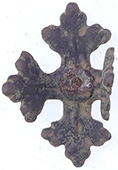 |
|
|||||||||||||||||||||||||
| Georgian trade weight | Medieval mount | Lead figurine hand | |||||||||||||||||||||||||
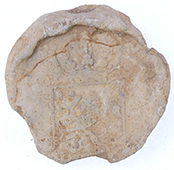 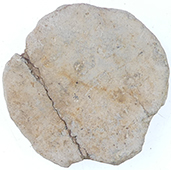 |
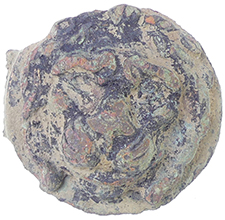 |
||||||||||||||||||||||||||
| Post medieval lead bale seal | Victorian lion head belt buckle | ||||||||||||||||||||||||||
 |
|
||||||||||||||||||||||||||
| Cambridgeshire bowling Association | 11,000 BC flint scraper | ||||||||||||||||||||||||||
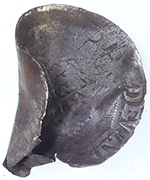 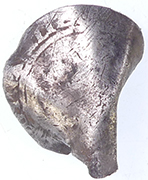 |
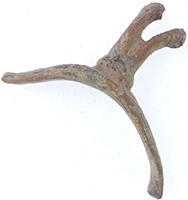 |
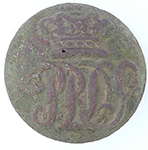 |
|||||||||||||||||||||||||
| 16thC Elizabeth 1st hammered silver sixpence | Georgian spur | Continental Army button - not a British crown 'PRQS' |
|||||||||||||||||||||||||
10-40 AD Cunobelin Celtic gold qtr stater - Plastic type - reported to museum 1.22g, 11.04mm |
|||||||||||||||||||||||||||
c600 AD Saxon silver sceat - sent to EMC database for recording 1.216g, 11.61mm I have recorded this new find, which is Series C1, as EMC 2024.0318. In the attached reoriented images you may just be able to see a right-facing bust on the obverse and a standard with tufa above on the reverse. Best wishes, Martin |
|||||||||||||||||||||||||||
Flanders, Philip 'de Stoute' (The Bold), 1384-1404, Gold Noble, (Noble d'Or), in the style of the English Coinage
Flanders, Philip 'de Stoute' (The Bold), 1384-1404, Gold Noble, Monster sized gold noble - almost an exact match as one above but it has a half rose on top of crown, two pellets left, one pellet right to ship front castle - similar legend with double satire stops. Needs more research to get exact type 7.9 grams, 31mm
|
|||||||||||||||||||||||||||
 |
 |
  |
|||||||||||||||||||||||||
'G. Eastern Railway and Steam ships C.' The Great Eastern Railway ordered three steamships to operate the service. The ships were named Amsterdam, Berlin, and Vienna to publicise some of the rail connections from the Hook of Holland. Berlin was built in 1894 by Earles Shipbuilding and Engineering Company of Hull. |
1310-14 Edward II hammered silver penny - Class 11b Ponted back E - Barred T Obv + EDWAR ANGL DNS hYB Rev CIVI/TAS/LON/DON - LONDON MINT |
||||||||||||||||||||||||||
  |
  |
||||||||||||||||||||||||||
| 1604 James 1st hammered silver sixpence | 1351 Edward III hammered silver half groat - Pre treaty - IM Cross 1, annulet stops - Trefoils over crown - 9 arches to tressure - N's reversed Obv +EDWARDVS REX ..ANGL ***** Rev CIVI/TAS/LON/DON - LONDON MINT |
||||||||||||||||||||||||||
|
 |
||||||||||||||||||||||||||
| Medieval book clasp | 1500-1650 buckle | ||||||||||||||||||||||||||
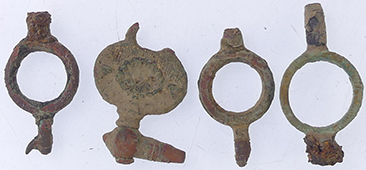 |
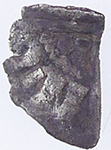 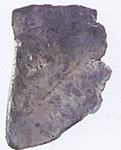 |
||||||||||||||||||||||||||
| Georgian watch winders | 1247 Henry III hammered silver voided longcross farthing | ||||||||||||||||||||||||||
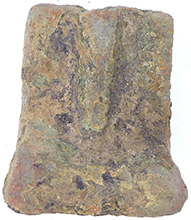  |
 |
||||||||||||||||||||||||||
| Medieval bronze pot foot | |||||||||||||||||||||||||||
  |
 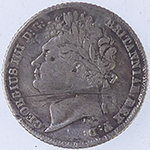 |
||||||||||||||||||||||||||
| 1723 George 1st milled silver shilling | 1824 George IV milled silver sixpence | ||||||||||||||||||||||||||
 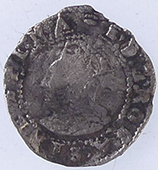 |
  |
||||||||||||||||||||||||||
| 1592-5 Elizabeth 1st hammered silver half groat - Tun mint mark | 1216 Henry III hammered silver voided short cross halfpenny Rev N.WINC- Winchester mint |
||||||||||||||||||||||||||
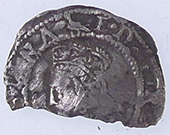 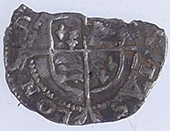 |
  |
||||||||||||||||||||||||||
| 1560-1 Elizabeth 1st hammered silver half groat - Martlet mint mark | 1247 Henry III hammered silver voided long cross halfpenny | ||||||||||||||||||||||||||
 |
 |
||||||||||||||||||||||||||
Hardie and Von Leer's company in 'The Fast Mail', 28 Nov- 3 Dec 1892 'The Fast Mail' |
Georgian watch winders | ||||||||||||||||||||||||||
Roman prick spur |
|||||||||||||||||||||||||||
  |
  |
||||||||||||||||||||||||||
1205 -1230 Scotland William 1st The Lion hammered silver short cross half penny - 5 star in each qtr Posthumous coinage Obv LE REI *** |
1663 Charles II milled silver shilling | ||||||||||||||||||||||||||
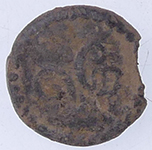 |
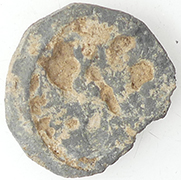  |
||||||||||||||||||||||||||
18th C 96th (Queen's Own Germans) Regiment of Foot 1824 96th Regiment of Foot |
17thC lead token | ||||||||||||||||||||||||||
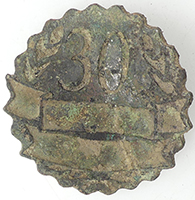 |
 |
 |
|||||||||||||||||||||||||
| 30th Regiment of foot medallion ?? | 17thC clothing fastener | 1500-1700 mount | |||||||||||||||||||||||||
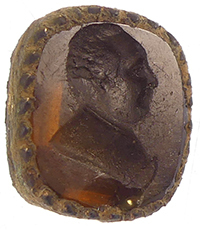  |
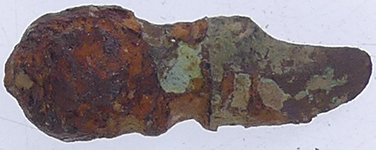 |
||||||||||||||||||||||||||
| Georgian fob seal | Medieval mount | ||||||||||||||||||||||||||
 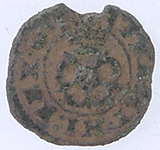 |
 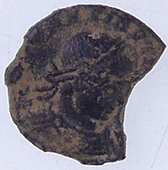 |
||||||||||||||||||||||||||
| 1634 Charles 1st hammered copper rose farthing | Mid 4thC House of Constantine Roman bronze coin | ||||||||||||||||||||||||||
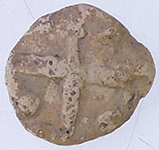 |
 |
  |
|||||||||||||||||||||||||
| 15thC lead token | 17thC button | 19thC Napoleon III milled silver coin | |||||||||||||||||||||||||
 |
 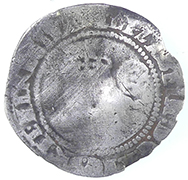 |
||||||||||||||||||||||||||
| Medieval bodkin needle | 1567 Elizabeth 1st hammered silver sixpence | ||||||||||||||||||||||||||
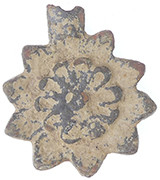 |
 |
  |
|||||||||||||||||||||||||
| Post medieval harness pendant | Georgian button | 1216 Henry III hammered silver voided shortcross halfpenny | |||||||||||||||||||||||||
 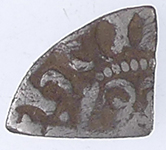 |
  |
||||||||||||||||||||||||||
| 1247 Henry III hammered silver voided long cross farthing | Description |
||||||||||||||||||||||||||
  |
 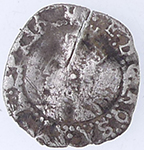 |
||||||||||||||||||||||||||
| Gilded Saxon harness pendant | 1587-9 Elizabeth 1st hammered silver penny -crescent mint mark | ||||||||||||||||||||||||||
  |
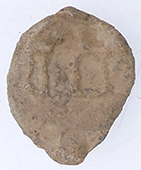 |
 |
|||||||||||||||||||||||||
17thC hammered copper trade farthing Non Essex Norweb Ref 467-9 Obv THM |
17thC lead token | Medieval heraldic enamelled harness pendant | |||||||||||||||||||||||||
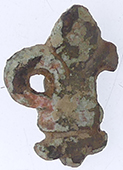 |
 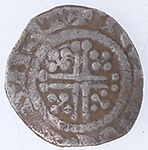 |
||||||||||||||||||||||||||
| Medieval mount | 1199 John hammered silver short cross penny - Class 5 Rev ** VT + TOM*** - Moneyer Tomas of Rhaddlan mint |
||||||||||||||||||||||||||
 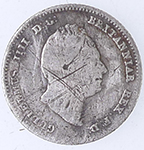 |
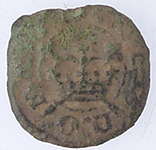 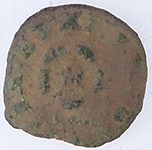 |
||||||||||||||||||||||||||
| 1836 William IV milled silver four pence | 1634 Charles 1st hammered copper rose farthing | ||||||||||||||||||||||||||
 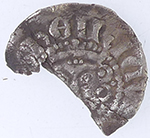 |
|
||||||||||||||||||||||||||
1247 Henry III hammered silver voided long cross penny Obv hENRICVS *** Rev /ANT/ - Canterbuy mint |
Roman mount | ||||||||||||||||||||||||||
 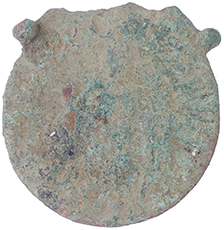 |
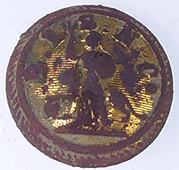 |
||||||||||||||||||||||||||
| Georgian shield mount with standing figures | British India Steam Navigation CompanyThe Calcutta and Burmah Steam Navigation Company was formally registered on 29 September 1856. The East India Company had opened the door to Mackinnon, Mackenzie & Co in 1855, when they invited tenders for a regular mail steamship route between Calcutta and Rangoon. The partners were successful in their bid, and Mackinnon acquired a small fleet of steamers for his Royal Mail service, two of which maintained the initial fortnightly run between Calcutta, Akyeb, Rangoon and Moulmein. During the Indian Mutiny of 1857 the infant Calcutta and Burmah carried troops, beginning a long tradition between the company and Her Majesty's forces. In 1858 the monopoly of the East India Company also came to an end, and direct rule from Whitehall brought far reaching developments for trade in the area. The Calcutta and Burmah Steam Navigation Company played an important part in the resulting period of expansion in Indian commerce and overseas trade.In 1862 the company was awarded two new mail contracts, which included a fortnightly service between Bombay and Karachi, and a service that ran eight times a year between Karachi and the Persian Gulf ports. In December of that year, the company was reorganised and renamed the British India Steam Navigation Company (BISN Co.). The size of the fleet was gradually increased and new routes opened up. Important new services included the Suez Canal and Calcutta-Mauritius (opened 1869); Aden-Zanzibar (1873); London-Basra (1874); Bombay-Laurenco Marques, and London-Queensland (1881); Calcutta-Australia (1885); Calcutta-New Zealand, and Bombay-East Africa (1896). The fleet was composed of modern screw steamers, and important relationships were formed with the shipbuilders William Denny & Bros. of Dumbarton, and A. & J. Inglis of Glasgow.Mackinnon died in 1893, and James Mackay joined the Board in 1894 (a partner of Mackinnon, Mackenzie & Co since 1881). He went on to become Chairman of the Board in 1913. Significant dates in the history of the company following the death of its founder included the opening of new services to Amoy and Swatow (1904), and Calcutta-Japan (1907). On 1 October 1914 the company amalgamated with the Peninsular & Oriental Steam Navigation Company (P&O), although it continued to operate as BISN Co. In 1957 the P&O and BISN Co. Boards separated, with Sir William Currie remaining Chairman of both. In 1970 Mr Ford Geddes became chairman of P&O, and BISN Co. was absorbed in the P&O Group reorganisation. |
||||||||||||||||||||||||||
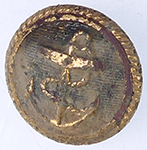 |
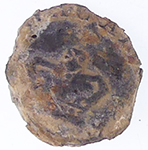 |
 |
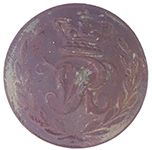 |
||||||||||||||||||||||||
| RN Capt / Commander - 1787 RN Lieutenant - 1787 |
Early military pewter button Local Militia |
Georgian watch winder AA Parsons and Son |
Victorian Royal Engineers button | ||||||||||||||||||||||||
 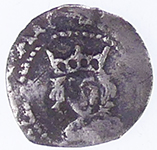 |
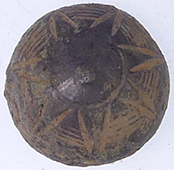 |
 |
|||||||||||||||||||||||||
1471-83 Edward IV hammered silver halfpenny - 2nd Reign - C in centre of reverse cross Rev CAN/TOR - Canterbury mint |
17thC button | Georgian fob seal holder | |||||||||||||||||||||||||
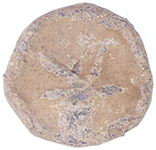 |
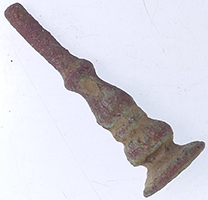 |
 |
|||||||||||||||||||||||||
| 17thC lead token | 16thC Tudor spoon handle | Lots of different calibre lead musket balls | |||||||||||||||||||||||||
 |
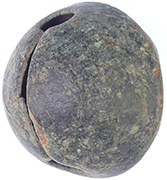 |
  |
|||||||||||||||||||||||||
| Georgian watch winder | 18thC crotal bell | 1943 George VI milled silver sixpence | |||||||||||||||||||||||||
|
 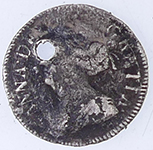 |
||||||||||||||||||||||||||
| Georgian mount | 1710 Queen Anne milled silver two pence | ||||||||||||||||||||||||||
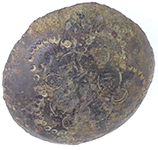 |
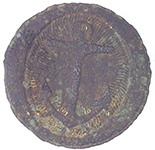 |
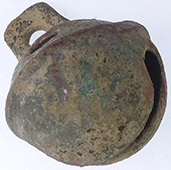 |
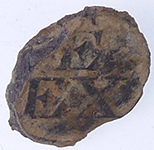 |
||||||||||||||||||||||||
| 17thC button | RN Capt / Commander - 1787 |
18thC crotal bell | The East Essex Militia were formed in 1759 and became the Essex Rifles Militia in 1853 during this period they had five styles of known button | ||||||||||||||||||||||||
Fantastically crisp condition sceat found in a previous orchard field c600 AD Saxon silver sceat - sent to EMC database for recording 1.243g, 12.65mm The coin (EMC 2024.0319) is Series E, VICO variety 1b. This type has symbols that might be read as VICO within the standard on the reverse, which might be a reference to a continental trading centre or vicus. Best wishes, Martin
|
|||||||||||||||||||||||||||
 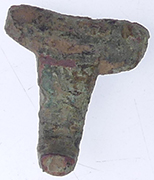 |
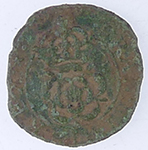 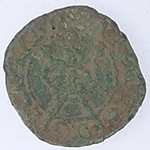 |
||||||||||||||||||||||||||
| 2nd C Roman fibular brooch | 1634 Charles 1st hammered copper rose farthing |
||||||||||||||||||||||||||
 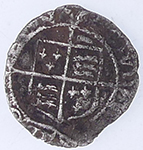 |
  |
||||||||||||||||||||||||||
| 16thC Elizabeth 1st hammered silver penny | 1377-1399 Richard II milled silver half penny Obv RICAR*** Rev /TAS/LON - London mint
|
||||||||||||||||||||||||||
   |
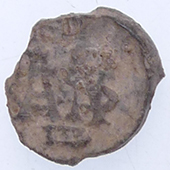 |
||||||||||||||||||||||||||
| Medieval gilded mount | Very interesting 17th C lead token | ||||||||||||||||||||||||||
  |
  |
||||||||||||||||||||||||||
Taco'd 1279 Edward 1st hammered silver long cross penny Rev CIVI/TAS/LON/DON - London mint |
1199 John hammered silver voided short cross half penny - Class 5b -5c Obv hENRIC **** Rev BENERIT **** - Moneyer Beneit of London mint |
||||||||||||||||||||||||||
Tiny Roman bronze with great detail - sent for ID - turns out to be 600 AD Saxon sceat- just sent off more details so we can get an EMC number issued. 055g, 10.98mm This is a Series O (Type 40) 'sceat'. I have recorded this coin as EMC 2024.0322. From the evidence of lamination in the images and the low weight this seems to be a contemporary copper alloy plated imitation. Plated imitations seem to have become an increasing problem as the 'sceat' coinage progressed in the first half of the eighth century. |
|||||||||||||||||||||||||||
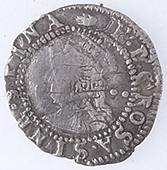  |
 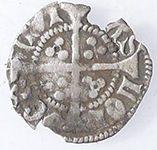 |
||||||||||||||||||||||||||
| 1590-2 Elizabeth 1st hammered silver half groat - hand mint mark | 1422-61 Henry VI hammered silver halfpenny - annulet issue double saltire stops - annulaets in oppoising quadrants on reverse Obv +hENRIC x REX x ANGL Rev CIVI/TAS/LON/DON - London mint
|
||||||||||||||||||||||||||
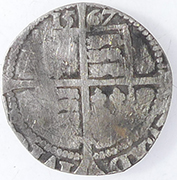 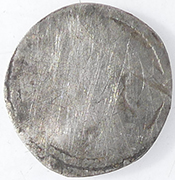 |
 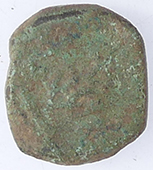 |
||||||||||||||||||||||||||
| 1567 Elizabeth 1st hammered silver sixpence | Unknown thick copper coin Crown C7 ID'd by Virg Phil 2.63g,14.75mm Features
|
||||||||||||||||||||||||||
 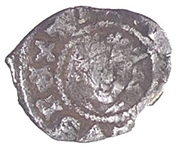 |
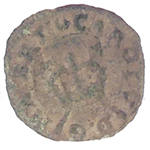  |
||||||||||||||||||||||||||
1279 Edward 1st hammered silver farthing - Type 30 -chubby cheeks Obv *** DVS REX A Rev CIVI/TAS/LON/DON - London mint |
1634 Charles 1st hammered copper rose farthing | ||||||||||||||||||||||||||
Roman bronze ring |
|||||||||||||||||||||||||||
|
Previous 2024 April finds page |
 |
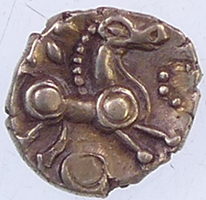
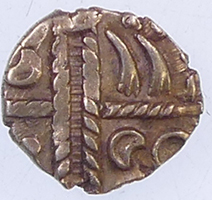
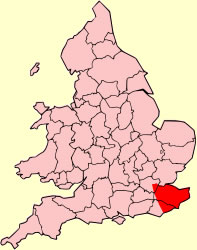
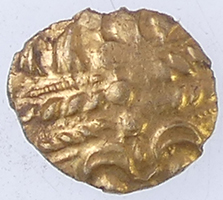
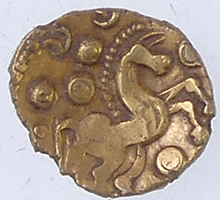





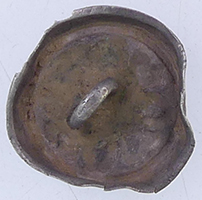
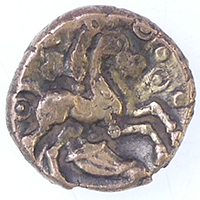
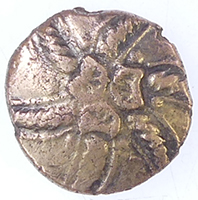


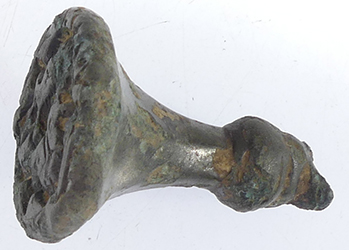

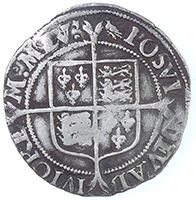




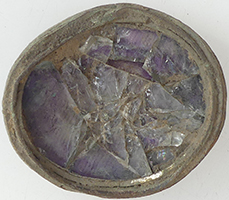
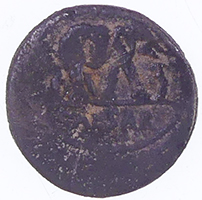
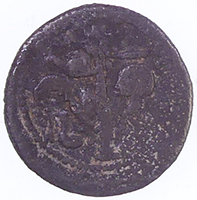


 Dubnovellaunus is the name of a king who, based on coin distribution, appears to have ruled over Kent east of the River Medway. He was the first king of the Cantiaci to issue inscribed coins: some of his coins appear to date from as early as 40-30 BC. Towards the end of the 1st century BC he seems to have been succeeded by a king called Vodenos or Vosenios, although it is possible the two kings' reigns were contemporary or overlapped.
Dubnovellaunus is the name of a king who, based on coin distribution, appears to have ruled over Kent east of the River Medway. He was the first king of the Cantiaci to issue inscribed coins: some of his coins appear to date from as early as 40-30 BC. Towards the end of the 1st century BC he seems to have been succeeded by a king called Vodenos or Vosenios, although it is possible the two kings' reigns were contemporary or overlapped.